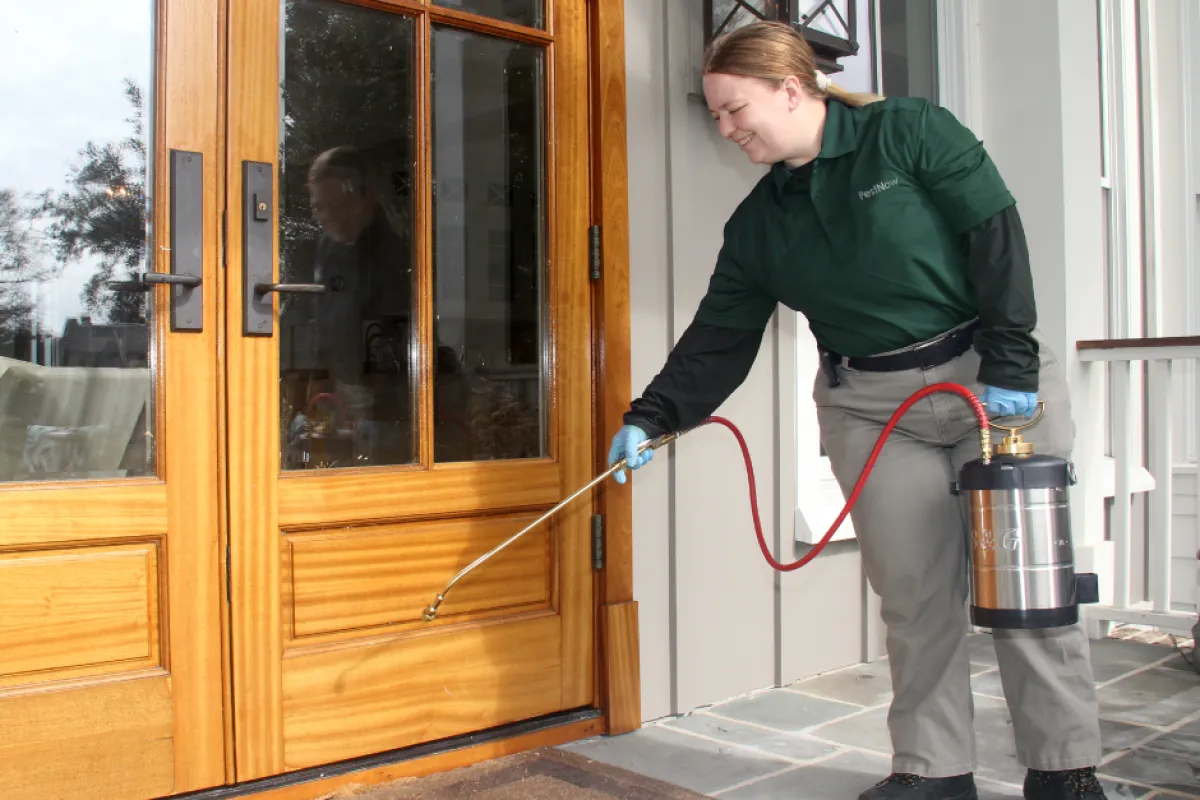A1 Pest Control Charlotte NC Bed Bugs - Expert Extermination Services
A1 Pest Control Charlotte NC Bed Bugs - Expert Extermination Services
Blog Article
Bed Bug Therapy Failure: Comparing Chemical Vs. Non-Chemical Solutions
In the world of insect control, particularly when dealing with the consistent problem of bed pests, the selection between chemical and non-chemical treatment remedies can be a crucial one. Both methods supply distinctive benefits and disadvantages, influencing aspects such as performance, safety considerations, and overall cost. By analyzing the nuanced details of each method, a more clear understanding of which path to pursue in addressing a bed insect infestation can be achieved.
Performance of Chemical Treatments
Chemical treatments for bed bug problems have been extensively identified for their quick and powerful effectiveness in eradicating these insects. When taking into consideration the performance of chemical therapies, it is crucial to recognize that they can give a complete and fast remedy to a bed insect problem.
Furthermore, chemical treatments have the advantage of providing recurring results, indicating that they can remain to get rid of bed bugs also after the first application. This recurring action is specifically advantageous in combating any kind of possible re-infestations. Additionally, the rapid action of chemical treatments can bring relief to individuals dealing with extreme bed pest invasions, allowing them to restore control of their home rapidly.
Safety Issues With Chemical Solutions
One important aspect that needs cautious factor to consider when using chemical services for bed bug treatment is guaranteeing the security of passengers and the atmosphere. Exposure to certain chemicals used in bed pest treatments can lead to respiratory concerns, skin irritation, or other damaging responses, specifically in individuals with pre-existing conditions or sensitivities.
Furthermore, the ecological effect of chemical solutions is an additional considerable factor to consider. Some chemicals utilized in bed pest therapies may be dangerous to useful insects, wild animals, and communities if they leach right into the dirt or water systems. It is important to use chemical therapies judiciously, adhering to safety standards, and thinking about less toxic alternatives to minimize these threats and guarantee the efficient and safe monitoring of bed bug problems.
Advantages of Non-Chemical Strategies
Thinking about the possible safety and security worries and environmental influence connected with chemical solutions for bed pest therapy, discovering non-chemical approaches presents a promising choice with a number of unique benefits. Non-chemical treatments are ecologically friendly, as they do not add to air or water pollution, making them a lasting option for insect control.
Additionally, non-chemical remedies can be effective in targeting bed pests, consisting of hard-to-reach areas where chemical therapies may not permeate. Techniques such as heat therapy, vacuuming, heavy steam cleaning, and mattress encasements supply complete obliteration without using dangerous chemicals. Moreover, non-chemical approaches can be less turbulent, requiring minimal preparation and enabling quicker reentry into treated locations. In general, selecting non-chemical bed pest therapy approaches not just focuses on safety and security and ecological protection yet likewise makes sure comprehensive and effective pest control.
Limitations of Non-Chemical Treatments

In addition, non-chemical therapies typically require numerous applications to accomplish effective eradication. This can be taxing and may not always assure full Extra resources removal of all bed pests and their eggs, specifically in hidden or hard-to-reach areas.
Moreover, the success of non-chemical treatments greatly depends on proper execution and thoroughness, which can be testing for people without professional experience. Poor application of non-chemical approaches may lead to insufficient obliteration, causing relentless infestations and the need for added therapies.
Consequently, while non-chemical treatments have their benefits, it is important to acknowledge these restrictions and consider them when establishing the most reliable method for taking care of bed pest infestations.
Price Contrast: Chemical Vs. Non-Chemical Options
Provided the constraints connected with non-chemical treatments, an essential facet to review in the context of bed pest administration is the expense comparison in between chemical and non-chemical choices. Chemical treatments normally involve the application of insecticides by experts, which can vary from $250 to $900 per space, relying on the seriousness of the problem and the dimension of the area to be treated. In contrast, non-chemical treatments like warmth therapy or heavy steam can be extra pricey, with expenses ranging from $1,000 to $6,000 for an entire home. While the initial cost of chemical therapies might appear lower, several treatments may be needed to completely remove the infestation, possibly boosting the general expense. On the other hand, non-chemical options might offer a more environment-friendly and lasting service, although they can be cost-prohibitive for some individuals. Ultimately, when thinking about the expense of bed bug treatment alternatives, it is essential to consider the upfront costs versus the efficiency and lasting sustainability of the chosen technique.
Final Thought

Considering the potential safety and security concerns and environmental impact connected with chemical services for lepest c bed bug treatment, exploring you can try these out non-chemical methods presents an encouraging choice with numerous distinctive benefits.Provided the restrictions associated with non-chemical treatments, a crucial element to evaluate in the context of bed pest monitoring is the price contrast between chemical and non-chemical options. In contrast, non-chemical treatments like warmth therapy or steam can be a lot more expensive, with costs varying from $1,000 to $6,000 for an entire home. While the first cost of chemical therapies might seem reduced, multiple therapies might be required to totally remove the infestation, potentially enhancing the total cost.In final thought, when contrasting chemical and non-chemical bed pest therapy alternatives, it is important to think about efficiency, safety and security, advantages, constraints, and cost.
Report this page